 Is third-party content part of your social media marketing mix?
Is third-party content part of your social media marketing mix?
Do you have multiple people in your company who discover content?
With the right process, a team can become a content-curation powerhouse.
In this article, you'll discover how to set up a collaborative workflow for content curation.
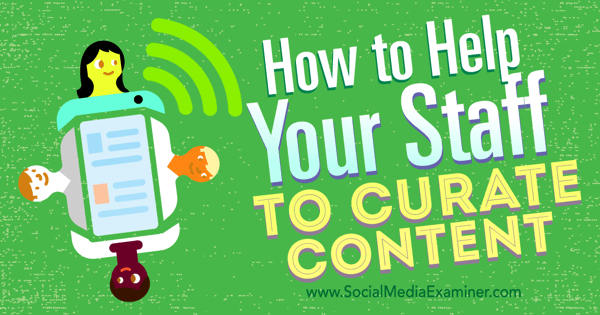
Listen to this article:
Where to subscribe: Apple Podcasts | Spotify | YouTube Music | YouTube | Amazon Music | RSS
#1: Establish Team Structure
Collaboration starts with structure. It's vital to establish clear roles and communicate exactly who's responsible for what. Two roles are needed: a coordinator and a group of contributors.
Coordinator
The coordinator's job is to identify major topics that your target audience cares about, and to make a master list of how all of these topics can be grouped together.
For example:
- Leadership
- Social media marketing
- Online marketing
- Email marketing
- Landing pages
- Conversion rate optimization
- Product development
- Pricing strategies
- Industry news
- Fun stuff
Next, match these topics to the contributors in your company so that they collect and submit content they naturally run into.

Contributors
Contributors help you generate a diverse flow of all things sharable. As you assemble contributors, remember to look beyond your social media or marketing team. Accessing more cross-discipline sources means you'll have more content to choose from.
What matters is quantity, creating what Andy Crestodina calls a “content cannon.” Ask specific people for specific amounts of content on designated topics within set timeframes.
Hi Tim,
Get World-Class Marketing Training — All Year Long!
Are you facing doubt, uncertainty, or overwhelm? The Social Media Marketing Society can help.
Each month, you’ll receive training from trusted marketing experts, covering everything from AI to organic social marketing. When you join, you’ll also get immediate access to:
- A library of 100+ marketing trainings
- A community of like-minded marketers
- Monthly online community meetups
- Relevant news and trends updates
The last optimization report you researched turned out great. In fact, I'd love to share many of the helpful resources you found while putting it together on our social channels.
The next time you come across something like [article], please send it to me on [collection tool].
Even better, since I know you work on projects like that regularly, please provide me with three posts and an infographic along those same lines by next Friday.
Thanks,
Aaron
This specificity is crucial in the next step.
#2: Choose a Content Collection Tool
The content your contributors suggest will come in all shapes and sizes: long-form blog posts, short-form posts, quotes, infographics, charts, stats, case studies, slide decks, videos, white papers, and more.
For collaborative social media, it's essential to find a tool that allows you to gather and schedule content. Here are some tools to consider for collecting content.
Slack
Slack allows you to create topic-specific channels such as #leadership, #product-dev, #customer-service, etc. As you create each channel, invite specific contributors based on the types of content they naturally come across.
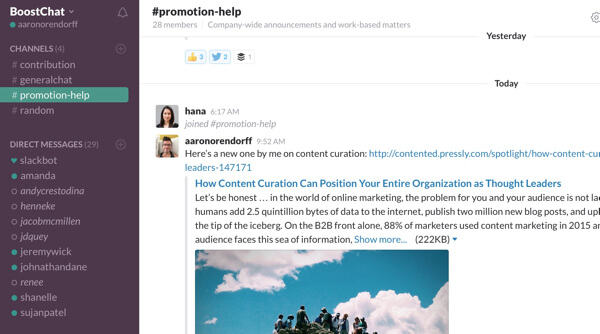
With Slack, you can even create custom emoji reactions to note which channels you plan to share the content on.

Trello
Use Trello to build a social media collaboration board. You can organize your contributors' suggestions based on the type of content.

Or organize your contributors' suggestions based on topics.

Memit
Memit brings together the clipping and collecting abilities of tools like Evernote and Pocket and will allow multiple users to contribute directly to topical collections.
In addition to saving links, you can save contributions directly to your preferred cloud platform. This represents a great two-for-one feature. It allows you to maximize not only social content curation, but also internal curation of useful resources.
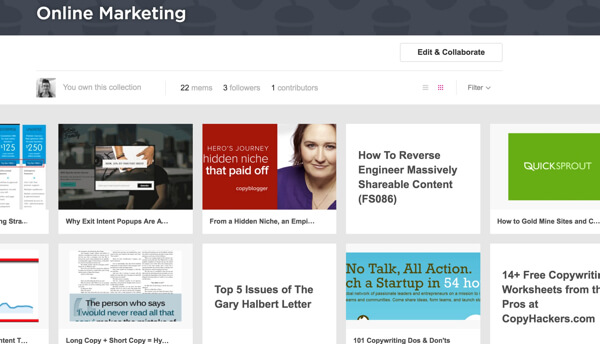
As the coordinator, you can select and share content directly to platforms like Twitter, Facebook, Google+, and LinkedIn. Metrics are also tracked.

Discover Proven Marketing Strategies and Tips
Want to go even deeper with your marketing? Check out the Social Media Marketing Podcast! Publishing weekly since 2012, the Social Media Marketing Podcast helps you navigate the constantly changing marketing jungle, with expert interviews from marketing pros.
But don’t let the name fool you. This show is about a lot more than just social media marketing. With over 600 episodes and millions of downloads each year, this show has been a trusted source for marketers for well over a decade.
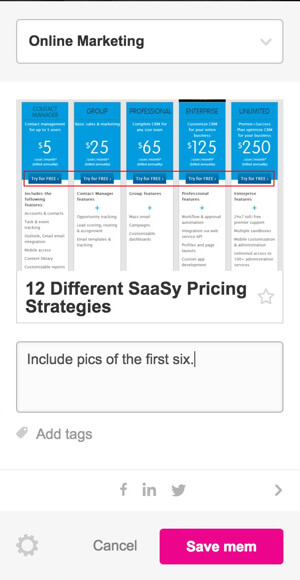
Regardless of the tool you select, be sure you can create multiple, manageable collections for each topic and invite contributors to the specific collections.
#3: Evaluate Content for Fit
It's important that the content you share on social media stands out. For this, your selection process needs some criteria. Here are three factors to help you comb through the curated content to select strong, relevant content to share.
Voice
Your company's voice is a lifeline to your online identity. Shared content should align your voice with your company's values, morals, and mission statement. Be sure what you write reflects your voice, whether it's playful, inventive, conversational, or formal. In other words, don't be indiscriminate with what you actually share.
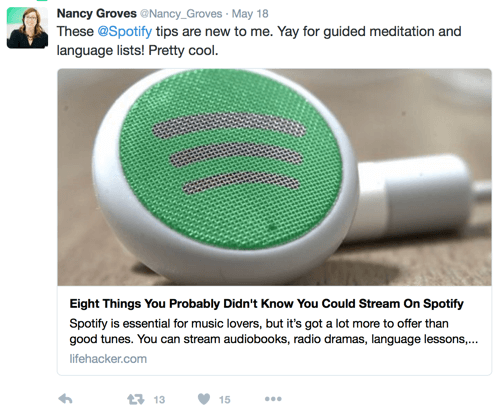
Tip: Use a quantity mentality when you structure and collect content; focus on quality when you post content.
Value
When sharing content, quality trumps quantity. Before you click Publish, Queue, or Share, ask yourself a few questions to make sure the content has value for your audience. Would your network thank you for this post? Does the post make you say “Holy smoke”? Does it pass the Facebook test of what the real people in your life would love? Would you email it to a friend?
If the content you've reviewed passes those tests, don't simply share it. The real value of curation comes when you comment on the content, highlight takeaways, and even repurpose key lessons in visuals.
Jacqueline Jensen does this frequently on her Twitter feed. She creates simple visual representations of complex posts using Piktochart.

Humanity
The ultimate goal of social media management (just like everything else you do) is sales. But don't let bottom-line thinking cloud your selection process. Social media is meant to be human. And this is precisely why it's vital to develop a collaborative approach to selecting content to share.
Sharing other people's content on social media helps you appear less self-absorbed. A great rule of thumb is to use the 5:3:2 ratio for posting content. Simply put, if you post 10 times per week, 5 should be other people's content, 3 should be your content, and 2 should simply be fun and personal.
Having a large pool of shareable content will help immensely in the selection process. Bear in mind that relevancy trumps recency; newer isn't necessarily better. This means that being a high-quality source of social curation is essential to becoming both trustworthy and follow-worthy.
#4: Schedule Content Shares
All of the content gold that you and your team unearth holds no value if you don't plan out your sharing schedule. Here are some general posting guidelines to get you started:
Facebook: Post two times per day, seven days a week, roughly between 1-4 pm or at 10:08 am and 3:04 pm (to be exact). Prioritize business-related posts for Thursday and Friday and save the weekends for personal and fun updates.
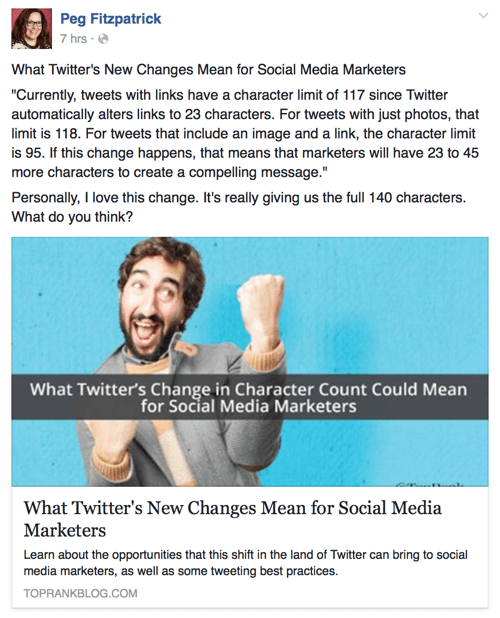
Twitter: Post 14 times per weekday and seven times per day on weekends. Schedule the bulk of your posts for early to mid-afternoon (12-3 pm) and experiment with outlier times like early morning and late evening. According to CoSchedule, B2B performs “16% better during business hours,” and B2C performs “17% better on weekends.”
LinkedIn: Post once per day, midweek focused, between 7:30 and 8:30 am and/or 5 and 6 pm. No weekends.
Google+: Post two times per day, 9:03 am and 7:04 pm. No weekends.
The big caveat, though, is that while best practices should be your starting point, tracking engagement and experimenting with posting times are essential to determine the best times for your specific audience.
The best curated content in the world is worthless if you don't take the time to optimize your posting schedule for maximum exposure to your target audience.
Conclusion
Every day, people all across your company (from marketing, to product development, to sales, to customer service) discover a treasure trove of sharable, click-worthy content. Use the processes outlined above to take advantage of all of the wonderful content the people in your company come across daily, and you'll soon have a never-ending source of quality content to share on social media.
What do you think? Does your business use a content curation structure? Have you tried any of these tools? Share your thoughts in the comments below!
Hierarchy photo from Shutterstock.
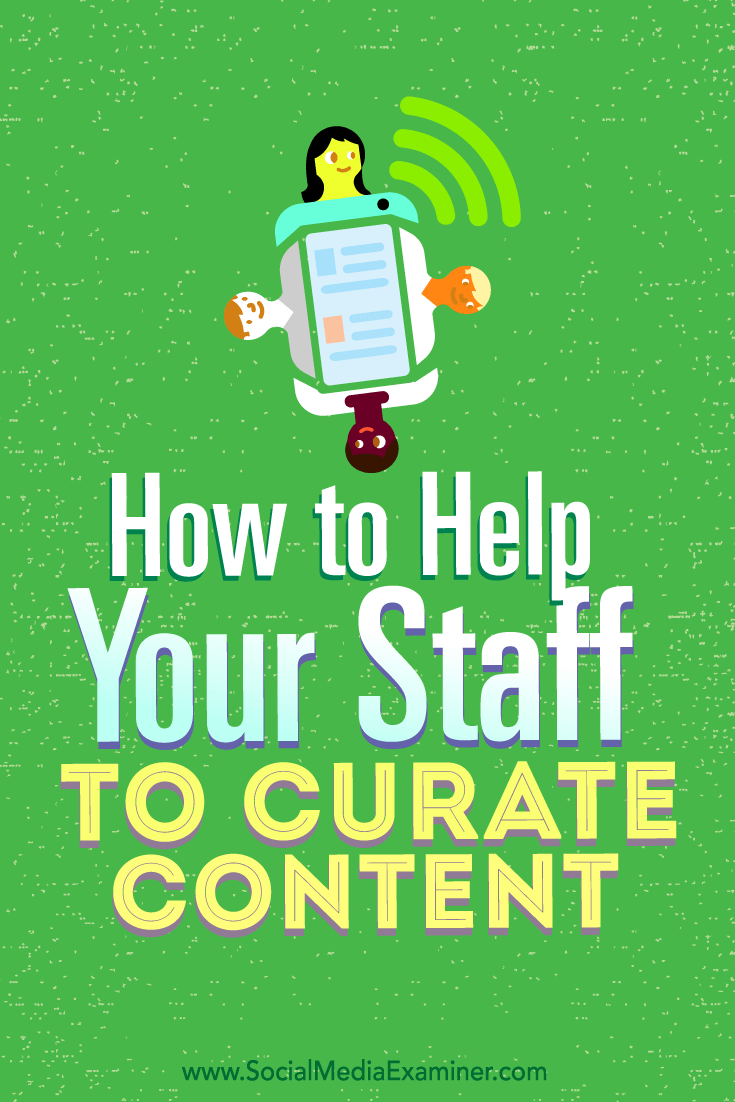
Attention Agency Owners, Brand Marketers, and Consultants

Introducing the Marketing Agency Show–our newest podcast designed to explore the struggles of agency marketers.
Join show host and agency owner, Brooke Sellas, as she interviews agency marketers and digs deep into their biggest challenges. Explore topics like navigating rough economic times, leveraging AI, service diversification, client acquisition, and much more.
Just pull up your favorite podcast app, search for Marketing Agency Show and start listening. Or click the button below for more information.

